Maintenance
Ceramic Coat Car Care
Owning a ceramic-coated vehicle with a self-cleaning finish requires thoughtful care to maintain its peak performance. Here are key maintenance steps: Use soft microfiber towels and pH-neutral car wash soaps to protect the coating from scratches and chemical damage. After application, allow sufficient time for the coating to fully cure, ensuring optimal performance. Perform regular maintenance washes and occasional deep cleaning using techniques like the foam cannon or the two-bucket method to prevent contaminants from accumulating. For long-term care, avoid automated car washes with abrasive brushes and instead opt for hand washing. We also provide additional tips tailored to your specific coating to help preserve its integrity and longevity.
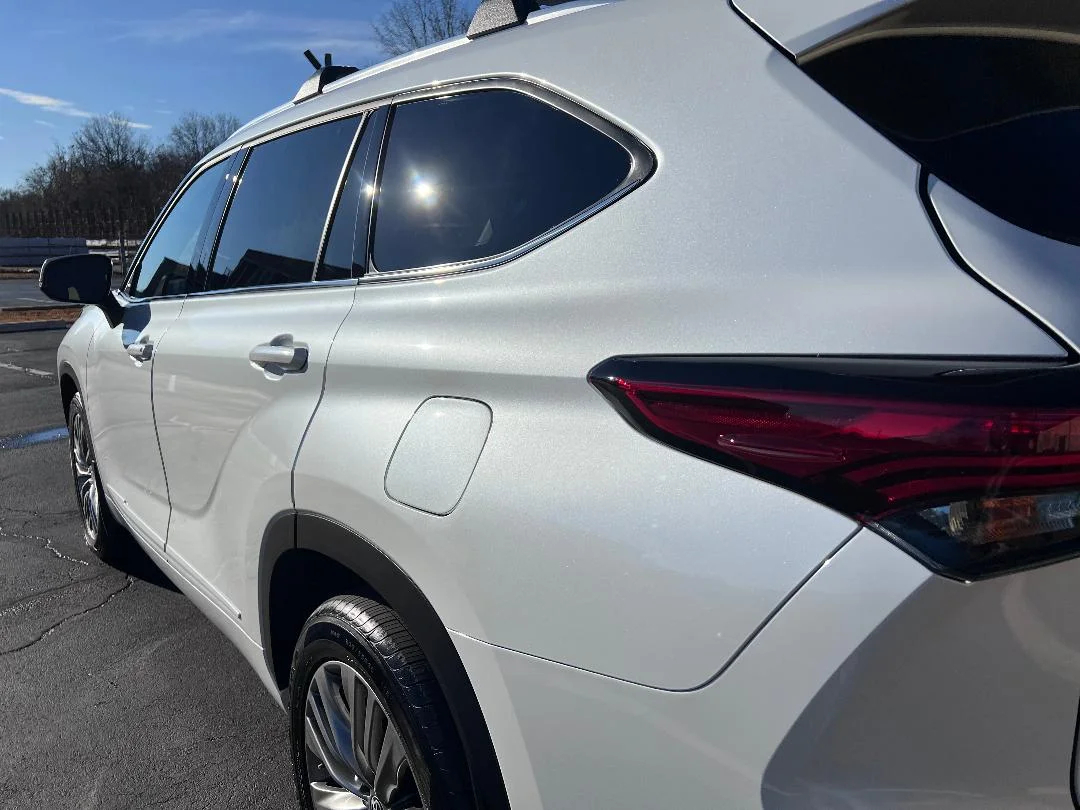
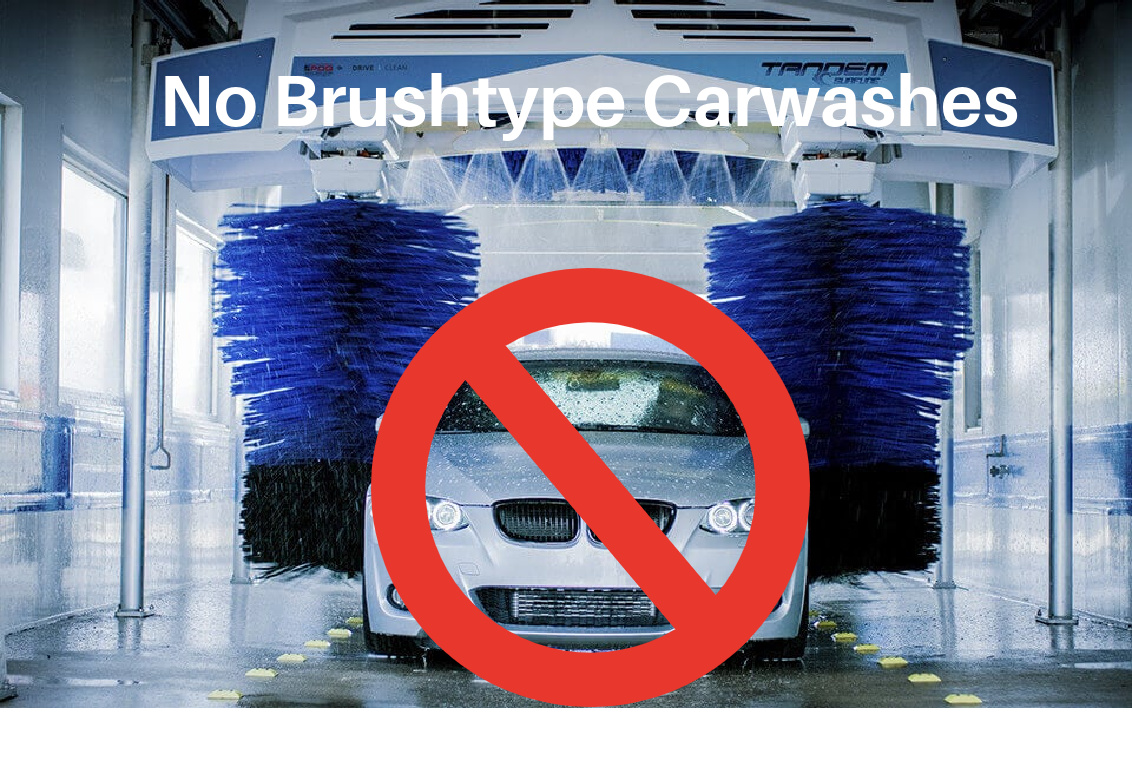
Gentle Cleaning Methods
While ceramic coatings provide excellent protection, it's important to note that they are not "bulletproof." To maintain their effectiveness and longevity, it's crucial to avoid abrasive methods such as using a scrub brush or automated "brush type" car washes, as these can harm the finish and degrade the coatings over time. Instead, we highly recommend using brand new or thoroughly cleaned microfiber mitts or towels with a GSM of 300 or higher for every wash. This gentle approach helps prevent scratches or swirls, preserving the integrity of the coating and ensuring that your vehicle maintains its pristine appearance for years to come..
Post-Coating Wait Time
Following the application of a ceramic coating, we recommend allowing a full two-week curing period before performing the initial car wash. During this critical time, if your vehicle encounters contaminants such as bug splatters, tree sap, or bird droppings, these can be safely removed using a damp microfiber towel with a GSM of 300-500. We’ll guide you on how to properly wipe affected areas to prevent any potential damage to the coating. For more stubborn contaminants or concerns, we encourage you to contact us immediately for expert assistance and advice. Our team is committed to helping you maintain the integrity of your ceramic coating, even during this important curing stage, ensuring your vehicle remains in pristine condition..
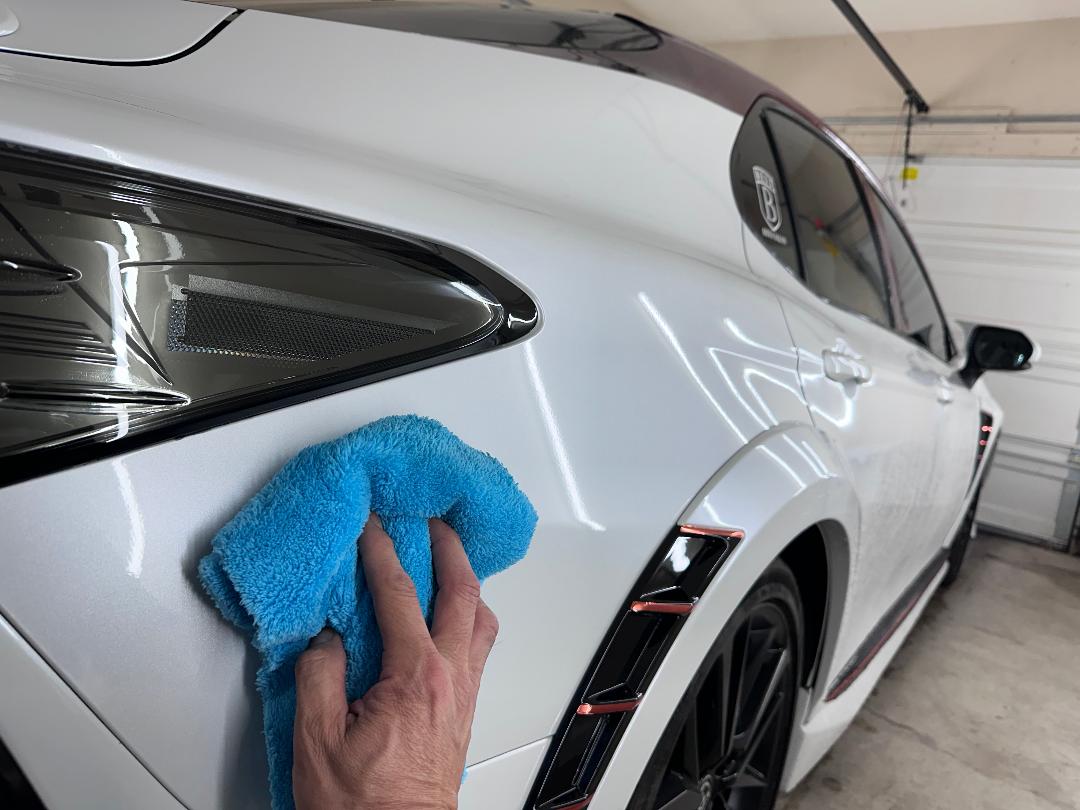
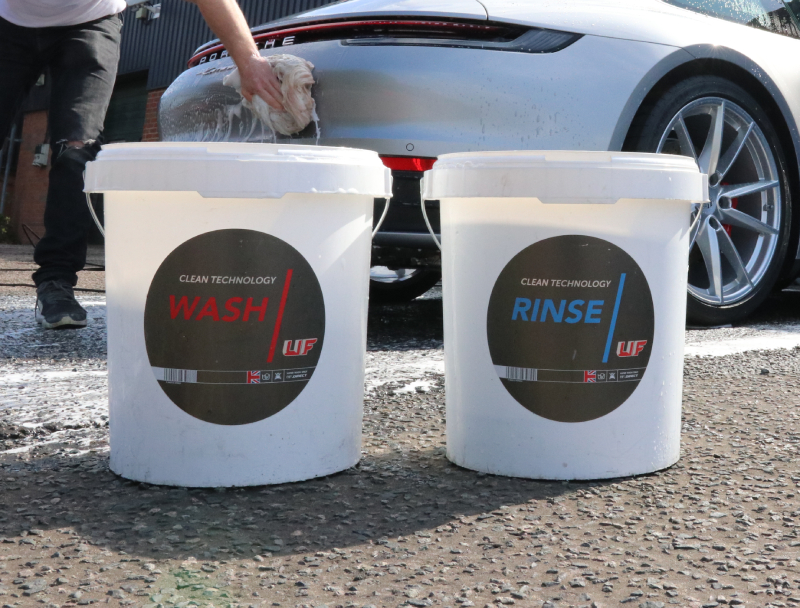
Traditional Car Wash - Two Bucket Method
Here's how it works: Fill one bucket with soap concentrate and the other with plain water for rinsing the microfiber after each wash application. Begin by rinsing the vehicle thoroughly to remove loose dirt and debris. Start washing the top sides of the vehicle, including the roof and glass, using the soapy microfiber. After washing a section, rinse the microfiber in the "rinse" bucket before reapplying soap from the "soap" bucket to wash the mid sections of the vehicle. Continue this process, ensuring to save the lowest sections of the vehicle and the wheels for last, as they typically accumulate the most contaminants during the wash.
NOTE: By following these steps, you can effectively clean your vehicle while minimizing the risk of scratching or damaging the paintwork.
Advanced Cleaning Option
For advanced cleaning, consider using a pressure washer, foam cannon, and a high-power blower, such as a leaf blower. Start by pre-rinsing the vehicle with the pressure washer to remove loose dirt. Next, apply soapy foam with the foam cannon, covering the entire surface. Let the foam sit for a few minutes, avoiding direct sunlight. Rinse off the soap with the pressure washer, working from top to bottom. Use the high-power blower to dry the vehicle, reducing water spots and removing droplets from crevices. Finally, use a 300+ GSM microfiber cloth to wipe away any remaining water for a streak-free finish. This method ensures a deep clean while protecting the ceramic coating.

Proactive Measuress
-

Use a no-rinse or pH-balanced mild soap bi-weekly to prevent dirt buildup.
-

Avoid washing in direct sunlight to prevent streaking and staining.
-

Start washing from the top and work your way down, leaving the dirtiest sections, like the wheels, for last.
-

Use a separate microfiber, mitt, or sponge for cleaning the wheels.
-

Do not use automated or manual "brush-type" carwashes, as they can break down the coating over time.
Protect Your Coating
-

Lawn sprinklers can cause water spots that the coating won't protect against.
-

Environmental factors like bird droppings, pollen, and tree sap should be removed promptly.
-

Be cautious with fleet trucks and commercial vehicles, as they can throw rocks and debris that may chip the coating.
-

Absolutely avoid abrasive soaps, cleaners, and scrub brushes.
-

Do not use automated or manual "brush-type" carwashes, as they can break down the coating over time.
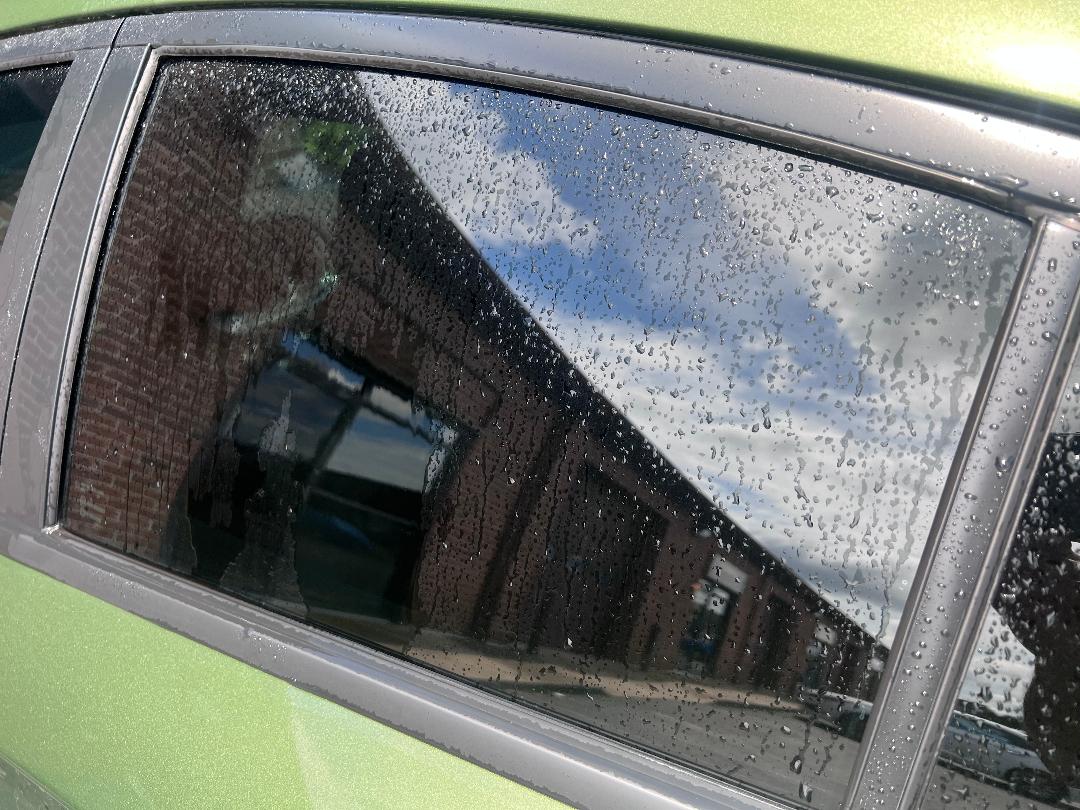
Don't Let It Air Dry
To avoid water spotting on your coated finish, follow these steps: Do not air dry: Never let your coated finish air dry, as minerals from the water can leave hard-to-remove rings. Use a high-power blower: Instead, use a high-power blower or leaf blower to remove water from the surface. Start from the top of the vehicle and work your way down to ensure thorough drying. Finish with a clean microfiber towel: After using the blower, finish drying the surface with a clean microfiber towel. Opt for a towel with a weight of 300+ GSM (grams per square meter) for the best results. By following these steps, you can effectively prevent water spotting and keep your coated finish looking clean and pristine.
Water Spots - Handle with Care
Water spotting can mar the appearance of your coating, but it's essential to approach removal carefully. Avoid abrasive polishes and third-party professionals, as they can potentially damage the coating. Instead, refrain from using excessive force during removal attempts. Reach out to us for expert advice and solutions tailored to your needs. Our guidance ensures that your warranty remains intact, and your coating protection stays optimal. Trust us to safeguard your vehicle's integrity without compromising its quality or longevity. Additionally, it's wise to avoid washing your car in direct sunlight, as this can exacerbate water spotting issues. By following these recommendations, you can effectively address water spotting concerns and maintain the pristine appearance of your vehicle's coating.
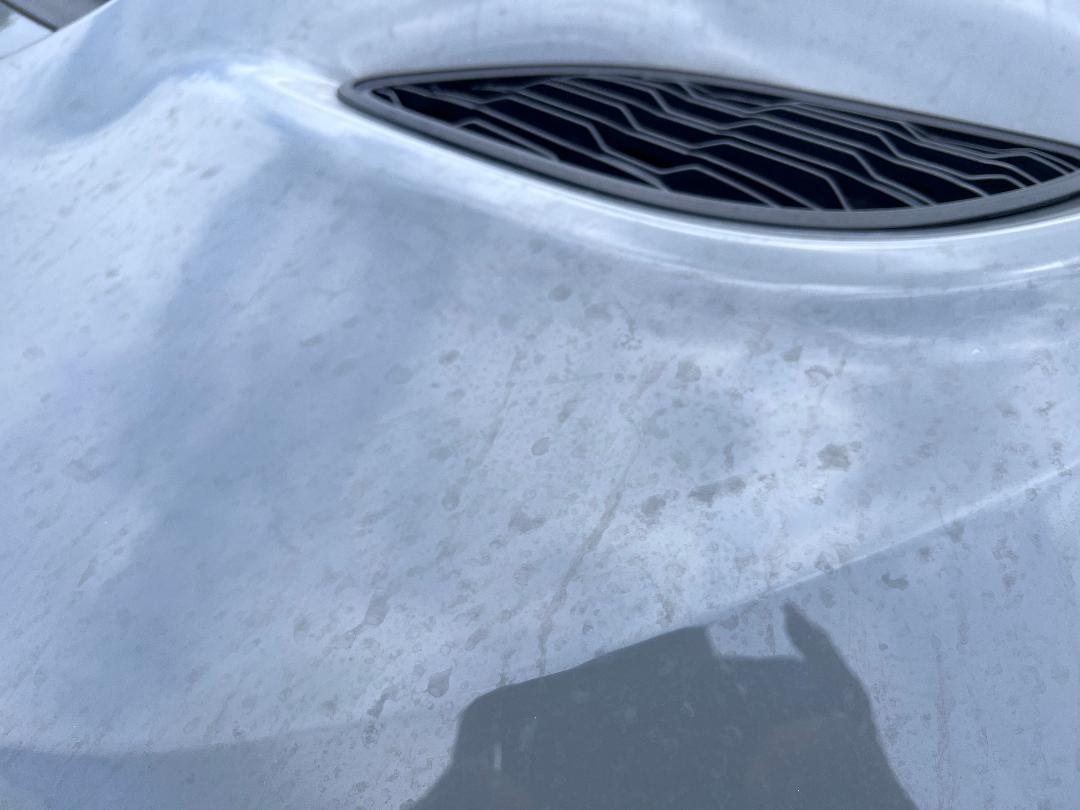

Microfibers - Choose Wisely
Absolutely, using 300+ GSM (grams per square meter) microfiber towels for washing and maintaining vehicles is indeed a great recommendation, especially for ceramic surfaces. Microfiber towels with higher GSM have thicker piles, making them more absorbent and effective for cleaning without scratching surfaces. This is particularly crucial for ceramic coatings, as they require gentle care to maintain their appearance and integrity. Using higher GSM microfiber towels reduces the risk of scratching the surface, ensuring a safer and more effective cleaning process for your vehicle. Therefore, investing in high-quality microfiber towels with a higher GSM is a wise choice for ensuring the proper maintenance of ceramic-coated vehicles.
Invest In The Deionizer System
If hard water spots or stains are becoming a concern for your coating, investing in a deionizer system could be a beneficial solution. Washing your vehicle with clean, pure water from a deionizer system can help prevent the formation of water spots and stains, ensuring a spot-free finish. Check out the "Deionizer System" section for more information on how these systems work and their benefits in maintaining your vehicle's appearance. By utilizing a deionizer system, you can effectively mitigate water spotting issues and keep your coating looking its best for longer.
